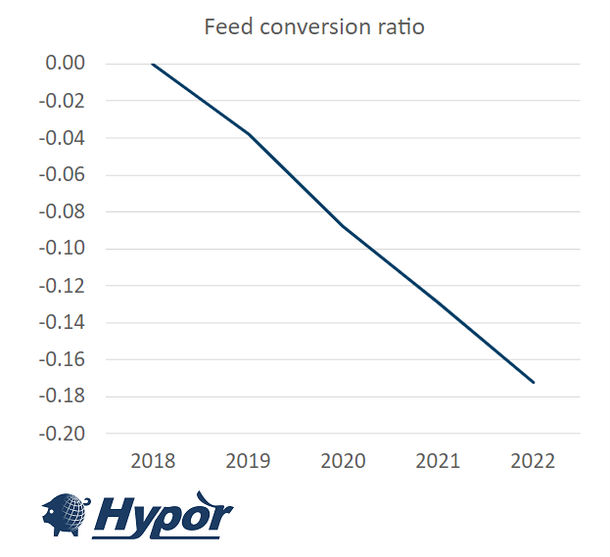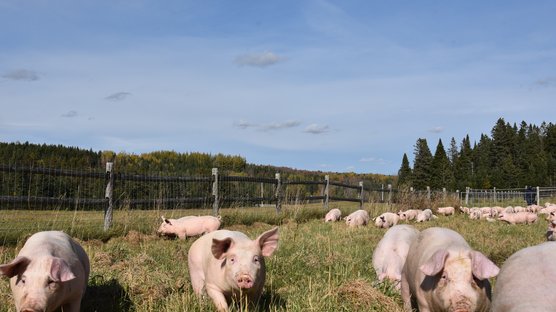
Published on Nov. 24, 2023
Getting the full value: How can pig farmers improve their bottom line?
Pork producers from all over the world share a common goal of providing healthy, affordable protein for a growing population.
Pork is one of the top consumed animal proteins in the world. It is a tasty and affordable option that can be adapted into many common recipes. But due to market volatility, damaging effects of animal disease, labor shortages, and more, many pork producers and members of the swine industry struggle to capture the full value of their efforts in their operations. How can genetics play an important role in alleviating pressure for farmers who need to get the most value from every pig in their system?
Livablility
Waste and losses in the animal production system greatly impacts the economic value of the output. Sow health and livability is one very important metric, not just to maintain high animal welfare standards, but for the bottom line. Balancing these two sides – the need for many piglets, while still protecting the health of the sow – is crucial in our breeding program.
Looking at livability from a product perspective, when comparing genetic suppliers, performance statistics related to survival make the Hypor Libra stand out.
| Retention of animals after 3rd litter | + 7.1% |
| Dropout | - 10.5% |
| Replacement | - 9.5% |
With the use of sows that stay in the system longer, this eliminates the cost of sow replacement and reduces the need for extra management from a farm labor perspective.
How do we select for livability?
Combined Crossbred and Purebred Selection (CCPS) is a crucial practice to measure and select for livability. CCPS uses information from both purebred and crossbred progeny of a sire to estimate his genetic potential in a commercial setting. With CCPS, we test hundreds of offspring from each boar to gather data on how these offspring will perform under commercial conditions.
Uniformity
Uniformity is another key trait in delivering the best possible value for pig farmers. Piglet birth weight is selected based on the actual weight, but also the variation in weights within a litter. The goal is to achieve a high number of quality, heavy piglets, closely matched in birth weight. "A high average birthweight" is a frequently-heard term. But an average of 1400 grams could mean, in practice, piglets between 800 grams up to 2000 grams. For all our products, we focus on reducing the variation of birth weights in each litter. In order to get the most value, we want to ensure each piglet has a high birth weight and eliminate "tail-enders". From a product perspective, the Hypor Magnus stands for quality piglets with an average birthweight of 1.5 kg and a low spread of weights with >96% of piglets weighing more than 1 kg.
We continually measure individual piglet birth weights on nucleus and commercial farms to maintain this standard and improve piglet quality. Heavier, uniform piglets are more likely to convert feed most efficiently and are more likely to reach full market value in less time.
How do we select for uniformity?
Throughout the growth phase, we measure body weight gain and feed intake allow selection of the best pigs for growth and feed efficiency. Incorporation of novel phenotypes, such as those gathered through camera technology, also improve the ability to select on uniformity. These targeted selection criteria ensure that uniform pigs are the parents for the next generation, which will improve the economic gains for the entire supply chain.
Feed efficiency
Since feed cost represents up to 70% of the total cost of modern pork production, FCR has an enormous effect on profitability of producers. Through extensive automation, our nucleus facility in Canada closely monitors and controls feed intake and frequency, feeding behavior and the weight of the sow in gestation. This data helps drive progress on feed efficiency and growth.
Genetic trend - Magnus

Looking at the genetic trends in our products, Hypor Magnus for example, we can see the progress in improving FCR. In fact, the selection index for the Hypor Magnus places the highest priority on feed efficiency, making up 30% of the index, followed by growth.
There is no simple solution for capturing the true value of pork. But these three traits, livability, uniformity, and feed efficiency, make a huge impact on profitability in your operations. Starting off right with high quality, tailored swine genetics can make a huge difference in delivering value for you and for the rest of the chain.



